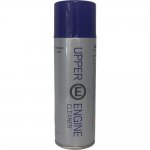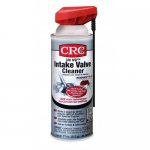To make sure I have identified it correctly, where exactly is that breather hose into which the cleaner should be sprayed?

You are using an out of date browser. It may not display this or other websites correctly.
You should upgrade or use an alternative browser.
You should upgrade or use an alternative browser.
The dreaded carbon build up on the intake valves...
- Thread starter 207cc Sport
- Start date
Do you mean the EP6DT 1.6 turbo engine?
If so, at the driver's end, rear of the camshaft cover there is a vent hose connection, which goes to the air intake plenum. If squeezed the right way (magic sometimes helps) it pulls off. It's like a kind of childproof lid. Idle the car and spray away.
If that fails to come off, or your mojo has failed, you can temporarily remove the turbo pressure sensor, which is on the top of the intake pipe a couple of inches away, but the vent is the proper place.
At best it only postpones the inevitable, but that can be worthwhile.
If so, at the driver's end, rear of the camshaft cover there is a vent hose connection, which goes to the air intake plenum. If squeezed the right way (magic sometimes helps) it pulls off. It's like a kind of childproof lid. Idle the car and spray away.
If that fails to come off, or your mojo has failed, you can temporarily remove the turbo pressure sensor, which is on the top of the intake pipe a couple of inches away, but the vent is the proper place.
At best it only postpones the inevitable, but that can be worthwhile.
I'm reliably informed that CRC Intake Valve Cleaner is a much better product, but I'm yet to find a store in Australia that sells it.
Many hits on eBay and amazon but "not in stock" is the prevailing theme,
View attachment 111285
I use Liqui Moly intake cleaner, it seems to work well after trying it a couple of times.
https://www.supercheapauto.com.au/p...etrol-engine-intake-decarb---366g/348781.html
Has anyone tried the cheaper version? SCA throttle body / carb cleaner https://www.supercheapauto.com.au/p/sca-sca-throttle-body-and-carby-cleaner---400g/0238.html ???
How does petrol clean the inlet valves and ports in a direct-injected engine?
I suspect you know this, but on the one engine of this type I've looked at the injector is sited between the inlet valves at quite a flat angle relative to the piston crown and for part of the injection time the valves are open. Part of the multi fan shaped spray pattern aims upwards towards the roof of the combustion chamber over the open angled valve and thus hits the back of the valves as air is drawn into the cylinder and directs the fuel spray over the valve, as per a port injected setup. But this of course doesn't affect the ports.
I've never looked at a THP injector under test to see which way it sprays, so I'll have to try and see it. It could help.What I know from experience is that the top surface of the valves gets extremely crudded until it seriously blocks incoming air flow. In the case of my engine the adherent crud was as deep on the valves as on the ports, though both were reducing air passage.
Actually I've only seen the Ford Ecoboost setup but was answering your general question, not specifically about the THP.
I don't think I'd have you guys' patience. It's enough work for me maintaining a 'normal' engine! I take my hat off to you.
I don't think I'd have you guys' patience. It's enough work for me maintaining a 'normal' engine! I take my hat off to you.
I have created an interest in Europe with SA459.
read about it:
Peugeot RCZ Forum ? Dreaded carbon build up on the intake valves . . . : Drivetrain
read about it:
Peugeot RCZ Forum ? Dreaded carbon build up on the intake valves . . . : Drivetrain
I'm reliably informed that CRC Intake Valve Cleaner is a much better product, but I'm yet to find a store in Australia that sells it.
Many hits on eBay and amazon but "not in stock" is the prevailing theme,
View attachment 111285
SA459 is the one - IMO.
It is very strong. During one application I got a spay on my finger and wiped it off with a cloth. Should have washed it immediately.
Result: 2nd degree burn on the length of my poor finger.
From a tuner.......very interesting -
https://www.etuners.gr/peugeot-citroen-thp-engine-maintenance-servicing-101/
Sent from my iPad using aussiefrogs
https://www.etuners.gr/peugeot-citroen-thp-engine-maintenance-servicing-101/
Sent from my iPad using aussiefrogs
Thats a great link and all the info a THP engine owner should know and follow.
We need to post this as a Sticky
Sent from my SM-G900I using aussiefrogs mobile app
We need to post this as a Sticky
Sent from my SM-G900I using aussiefrogs mobile app
Owners of cars with this engine; would you buy another? Or is the extra hassle worth it? I'm bound to be asked by colleagues, as the 'Euro car guy'.
All engines have niggles that show when new or over time, and the makers fix them in subsequent versions. This is true of the family of PSA engines developed from the EP6DT. The pumps and chains and other things listed on sites have all been redesigned. The new EB range of PSA engines also has direct injection.
So Stuey's question really comes down to whether one should buy a direct-injected engine, because this is at the root of the crudded valves. The problem is worsened by turbocharging.
Most new engines are direct injected and many are turbocharged. All Euro makes, because of the strict emission laws and the desire to get more from smaller engines. Asian makers are following this design trend. They need to sell into advanced countries too. There are pressures against diesels, that are simply nonsense unless the replacement is cleaner.
So port cleaning is going to become a way of life again, just as decokes and valve grinds once were. There will likely be a move to make the ports more accessible and build cheaper tools as it becomes more common. I think that means will be developed to reduce oil vapour too. At present the rules require any unsuppressed vapour to be burnt.
It isn't directly related, but PSA diesel owners have long become used to exhaust filter regeneration. The papers are running stories about urban-driving Toyota owners and their lawyers who have just discovered this inconvenient fact of modern motoring.
So Stuey's question really comes down to whether one should buy a direct-injected engine, because this is at the root of the crudded valves. The problem is worsened by turbocharging.
Most new engines are direct injected and many are turbocharged. All Euro makes, because of the strict emission laws and the desire to get more from smaller engines. Asian makers are following this design trend. They need to sell into advanced countries too. There are pressures against diesels, that are simply nonsense unless the replacement is cleaner.
So port cleaning is going to become a way of life again, just as decokes and valve grinds once were. There will likely be a move to make the ports more accessible and build cheaper tools as it becomes more common. I think that means will be developed to reduce oil vapour too. At present the rules require any unsuppressed vapour to be burnt.
It isn't directly related, but PSA diesel owners have long become used to exhaust filter regeneration. The papers are running stories about urban-driving Toyota owners and their lawyers who have just discovered this inconvenient fact of modern motoring.
It isn't directly related, but PSA diesel owners have long become used to exhaust filter regeneration. The papers are running stories about urban-driving Toyota owners and their lawyers who have just discovered this inconvenient fact of modern motoring.
In the article https://www.caradvice.com.au/713664/class-action-toyota-dpf/ they suggest "Toyota contacted owners offering to clean or replace the DPF in affected vehicles, and retro-fit a manual regeneration switch...." Is fitting a manual switch in our chariots a realistic proposition?
I know of no way except a forced regeneration using Diagbox. I'd rather have an idiot lih\ght teling me when it's happening.
Regeneration is a very hot process with an extremely unpleasant discharge from the exhaust. PSA make it happen on the open road. You wouldn't want it happening near people, or on grass, or with a car parked close behind. The C5 exhaust points down. I think the various makers would be wary of a simple manual switch because of the law suit risk.
Regeneration is a very hot process with an extremely unpleasant discharge from the exhaust. PSA make it happen on the open road. You wouldn't want it happening near people, or on grass, or with a car parked close behind. The C5 exhaust points down. I think the various makers would be wary of a simple manual switch because of the law suit risk.
I'm on my third car with a THP engine (I still own two of them) and I've had no dramas with them. There's been no "extra hassle".Owners of cars with this engine; would you buy another? Or is the extra hassle worth it? I'm bound to be asked by colleagues, as the 'Euro car guy'.
What about the extra hassle of cleaning the valves and ports? Or is that something you don't see because it is performed by routine dealer (or other) servicing - so I should have written 'hassle or cost'.
Last edited:

